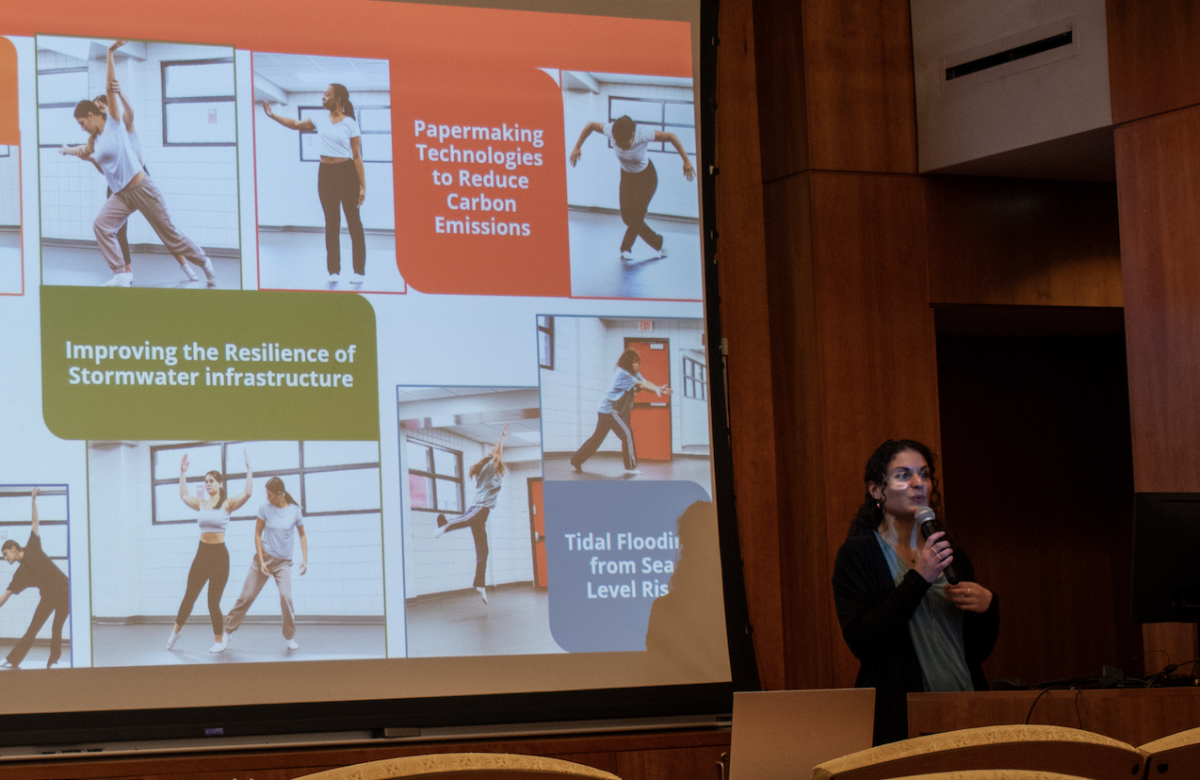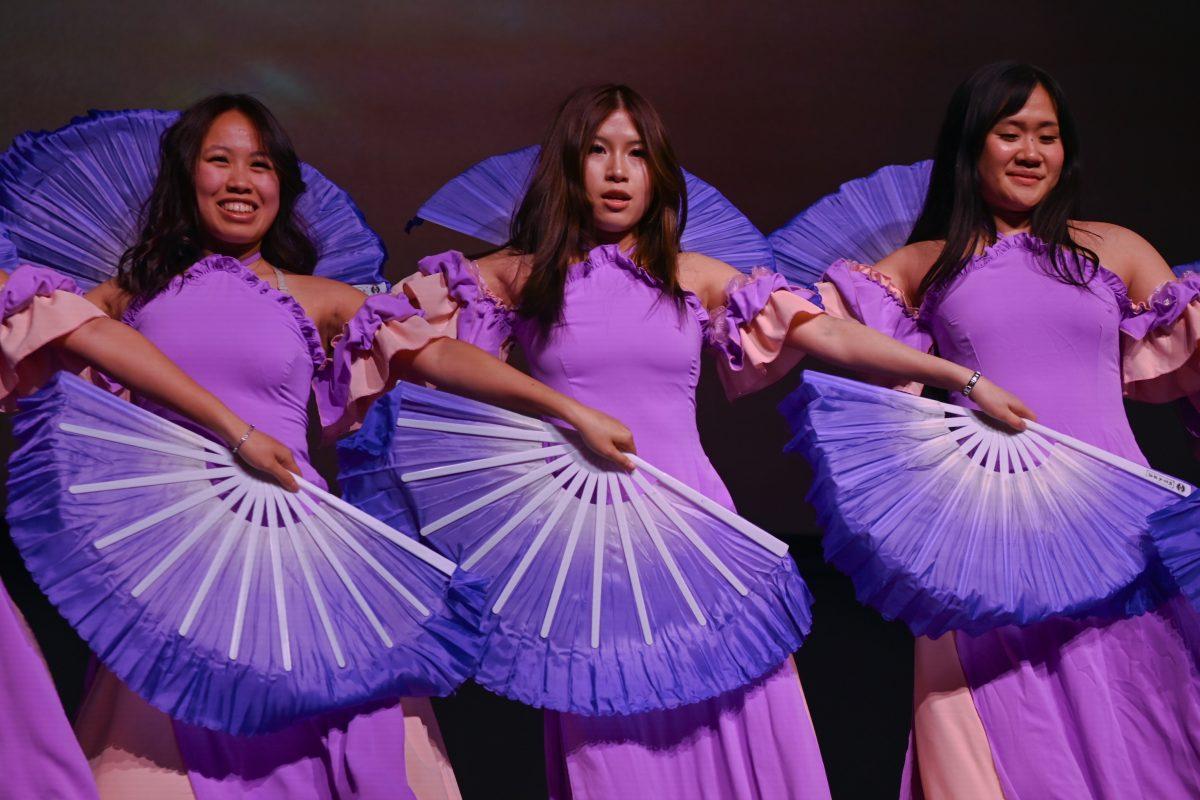Layla El-Khoury, a Ph.D. student studying biological and agricultural engineering, spoke on merging the arts and the sciences through the process of choreographing and performing “Force of Flows,” her original dance about streambank erosion, at an event for NC State’s Arts and Your Major series.
Although El-Khoury’s passion lies with environmental protection, her journey with dancing began at three years old when she started practicing ballet and modern styles. While pursuing her undergraduate degree in biological engineering at NC State, she participated in State Dance Company, from which she became a teacher in 2021.
El-Khoury’s inspiration for her dance was her own journey; she saw herself as two different identities — an engineer and a dancer. She said her piece is an effort to blend those two together.
“When you merge the two together, then it gives you a greater chance of fostering a human connection,” El-Khoury said. “Art is a great way to take our research and find a way to say, ‘This is how it impacts you.’”
El-Khoury said art makes it easy to communicate knowledge with people outside of a given field.
“When I started thinking about this, I thought about, ‘What are the most important parts of my research, and what do I want people to know about streambank erosion?’,” El-Khoury said.
Before creating the dance, she surveyed her dancers and possible audience members to see if they knew anything about streambank erosion, and most didn’t. This helped her find a direction in how she would portray her research through art. She began with thinking about the music.
“I didn’t necessarily want the sound of a flowing stream, which I could have used, but I wanted to find music that evoked the same emotion and put you in that setting without it being that actual sound,” El-Khoury said. “Then I had to think about the dancers and who they were representing. Then I had to think about the structure of the dance.”
The showing of the dance was accompanied by a narration explaining streambank erosion voiced by women, which she said was intentional to represent her position as a woman in STEM. She chose a 12-year-old and 60-year-old to voice the narrator to show transition in environmental issues over time.
“I used this transition of going from a younger voice to an older voice … to show the passing of time,” El-Khoury said. “But also to represent the previous generations handing their problems down to us.”
The dancers acted out the cycle of streambank erosion through movement; they started low on the ground in a stationary position to symbolize stable, pre-modified soil, and they progressed into taller and more spread-out dancing to show river dynamics like degradation and widening. By the end, dancers would start the choreography again, but in reverse.
“I really wanted every movement to be actually based on how streams behaved in real life,” El-Khoury said.
LilyGrace Wolfe, outreach coordinator for the Arts program and a dancer for El-Khoury’s performance, said it was an amazing experience to work alongside her for this piece.
“Layla was so intentional as a choreographer, and you could see how knowledgeable and how deeply she understood and cared about this topic,” Wolfe said.
El-Khoury said she didn’t know how people were going to receive the piece.
“I was worried just because it was a piece about streambank erosion; it’s such a niche area,” El-Khoury said. “But I had a lot of people tell me that it was their favorite piece of the night.”
Though her piece was performed two years ago, El-Khoury has continued her work in blending dance and science. Her most recent work about plastic in the ocean will be featured at the Fall Dance Concert on Nov. 16-17 at Stewart Theatre.
Find tickets for the Fall Dance Concert here.
For more information about upcoming Arts and your Major events, visit the Arts program’s website.














